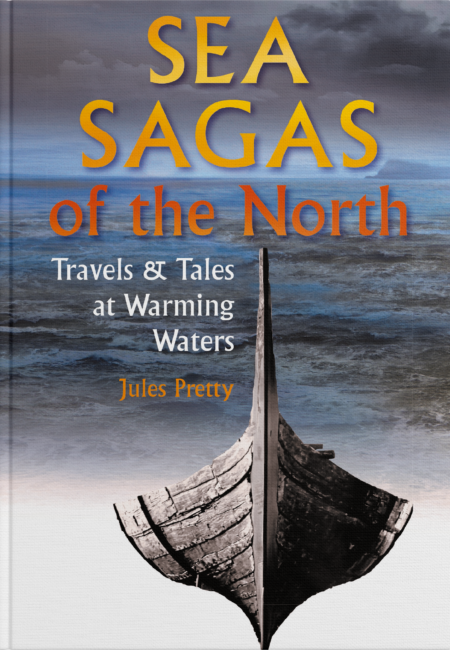
I write on the intersection between nature and people, seeking ways to create stories and evidence to generate hope and social and political change.
I have had eight sole-authored books published, and a further 15 that are co-authored, sole-edited or group edited. My first book was Unwelcome Harvest written with Gordon Conway in 1991; my most recent are Sea Sagas of the North and The Low-Carbon Good Life.
Topics have included the cultural values of agricultural systems (Agri-Culture 2002), regenerative methods (Regenerating Agriculture, 1995), walking the coast of east England (This Luminous Coast, 2011), journeys with indigenous communities (The Edge of Extinction), local nature and culture stories across seasons of the year (The East Country), and public engagement (How Public Engagement Improves Lives, 2022).

Sea Sagas of the North (2022)

There are shadows on this shining sea. Fish cities have shrunk to hamlets, old ports have been levelled and harbours are full of warming water yet there’s barely a single ship. An Arctic author asks, how do you say goodbye to a glacier? A burnished skipper, four score years of staring at horizons, says, you know, we were more tolerant in those days, when we sailed and steamed and brought home gifts and stories.
Sea Sagas of the North interweaves prose chapters and alliterative sagas. Each chapter tells of great travels across shores, seas and islands. Each saga tells of tales and times from across the ages.
The book concludes with The Drowning of Doggerland, how the once dry steppe was flooded by the warming seas, making the people of the plain the first climate refugees. What can now be done to avoid more fire and flame?

Low-Carbon Good Life (2023)
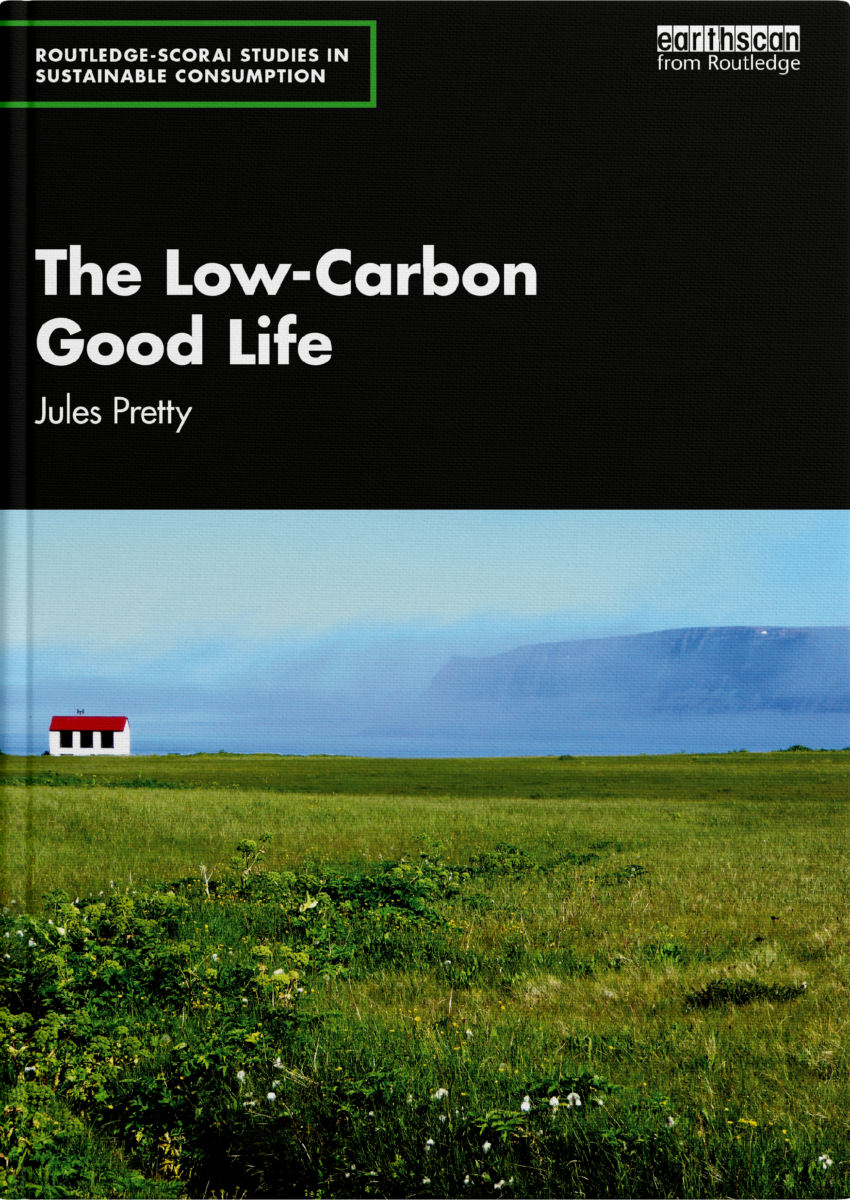
How can we reverse and repair the four interlocking crises arising from modern material consumption: the climate crisis, growing inequality, biodiversity loss, and food related ill-health.
A low-carbon good life offers opportunities to live in ways that will bring greater happiness and contentment. We have choices, a good life will not cost the earth.
But dropping old habits is hard. There are paths, but some are in the dark forest. Fresh forms of public engagement and citizen action will be needed.
This farewell time is a threshold, a crossing to something better for all.
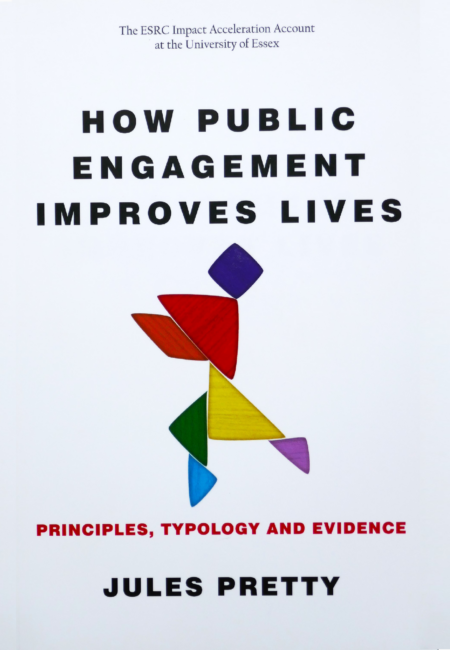
How Public Engagement Improves Lives (2022)
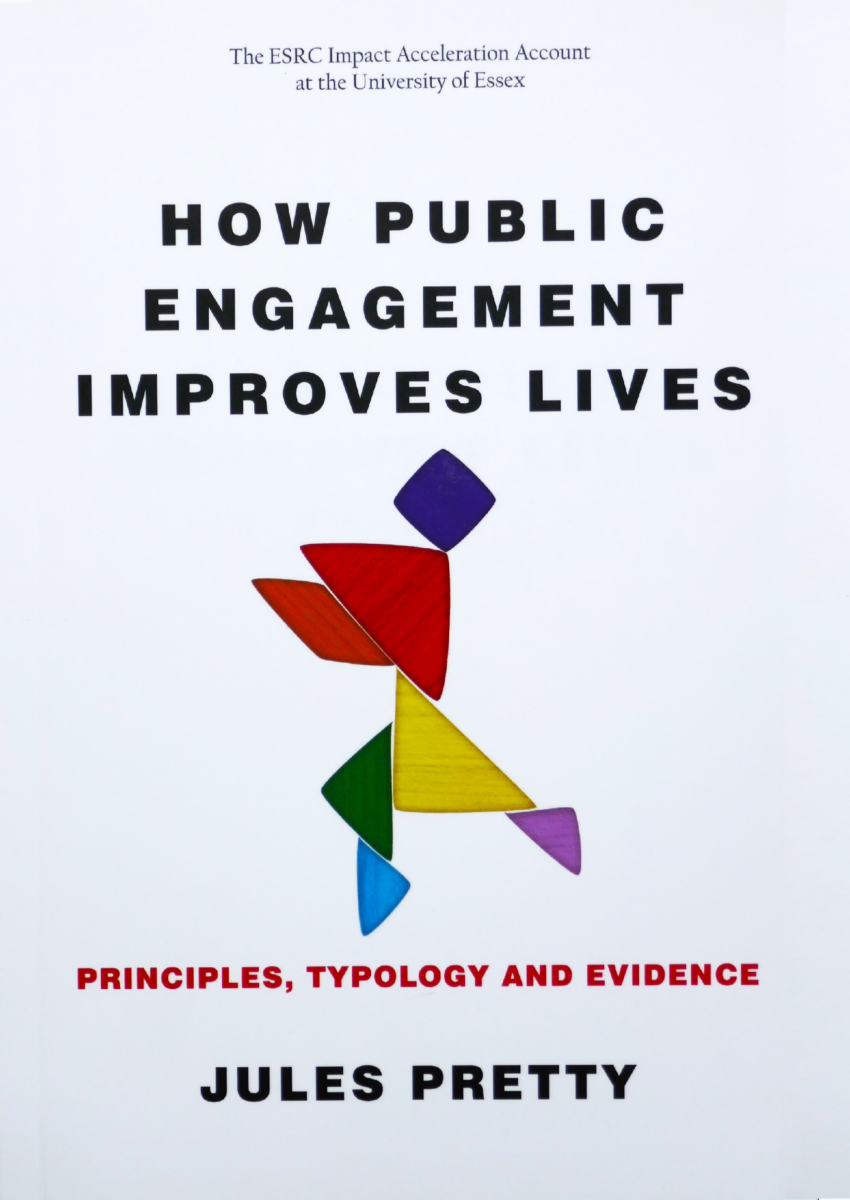
There is one central purpose for public engagement (PE) : it is to ensure research, education and policy leads to improvements in people’s lives.
An engaged organisation plays an active role in helping to transform social and ecological systems, has a high national and international profile, and helps shape policies and societal values on education institutions.
More than 40 examples of contemporary methods and approaches are depicted on scales from passive to self-mobilising, and from single event to regular and sustained action.
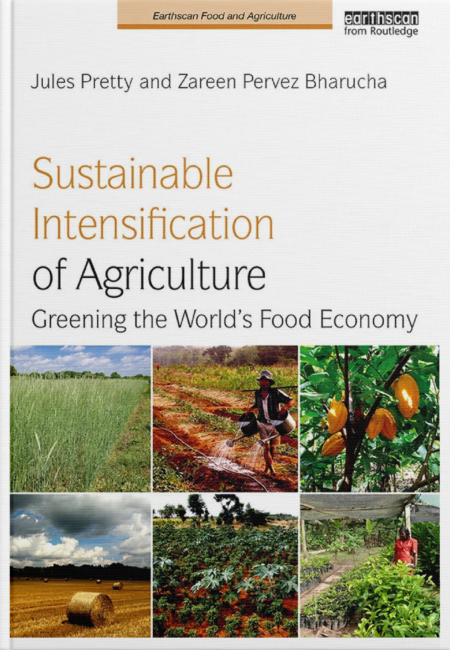
Sustainable Intensification of Agriculture (2018)
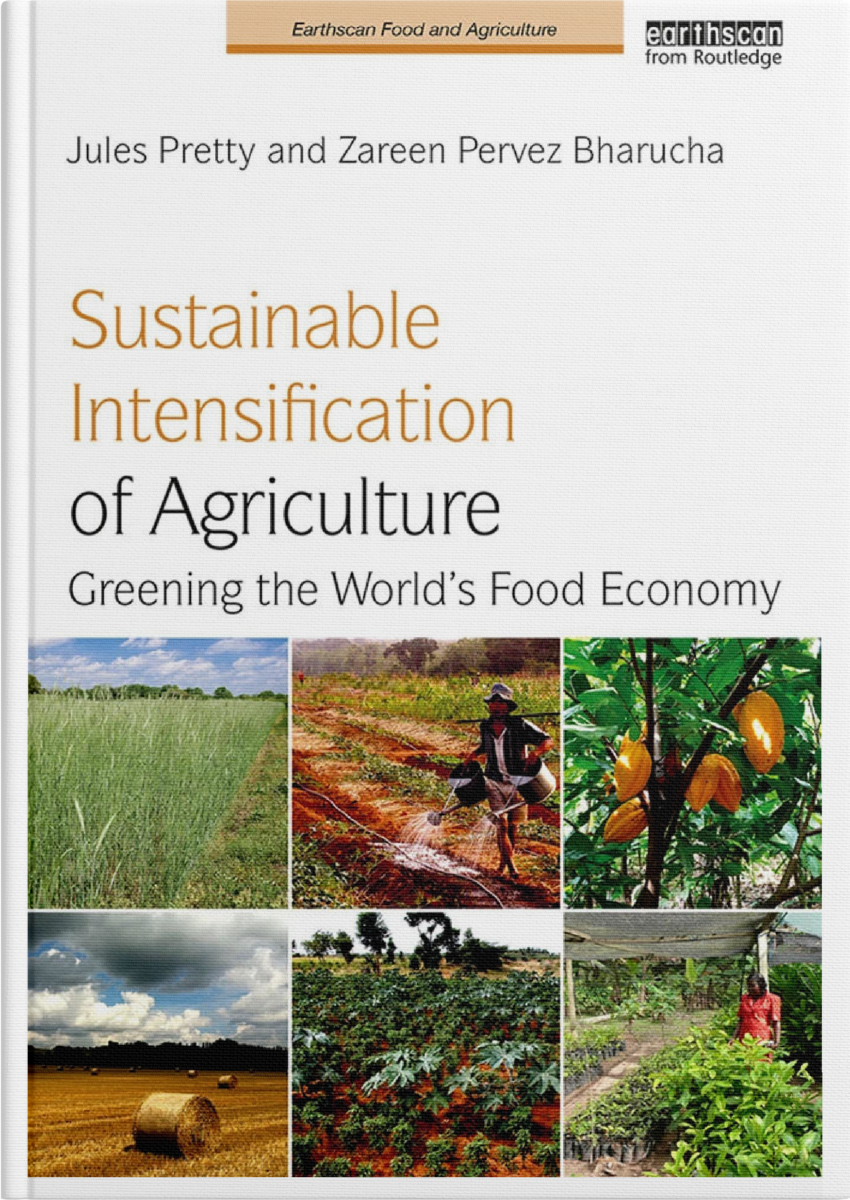
Sustainable intensification (SI) has emerged in recent years as a powerful conceptualisation of agricultural sustainability and has been widely adopted in policy circles and debates. It is defined as a process or system where yields are increased without adverse environmental impact and without the cultivation of more land.
This book sets out current thinking and debates around sustainable and regenerative agriculture. It presents evidence from around the world to show how various innovations are improving yields, resilience and farm incomes, particularly for resource constrained smallholders in poorer countries, but also in the developed world.
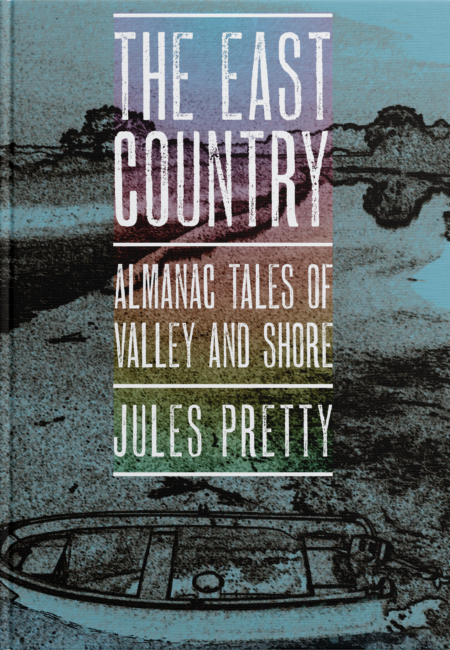
The East Country
(2017)
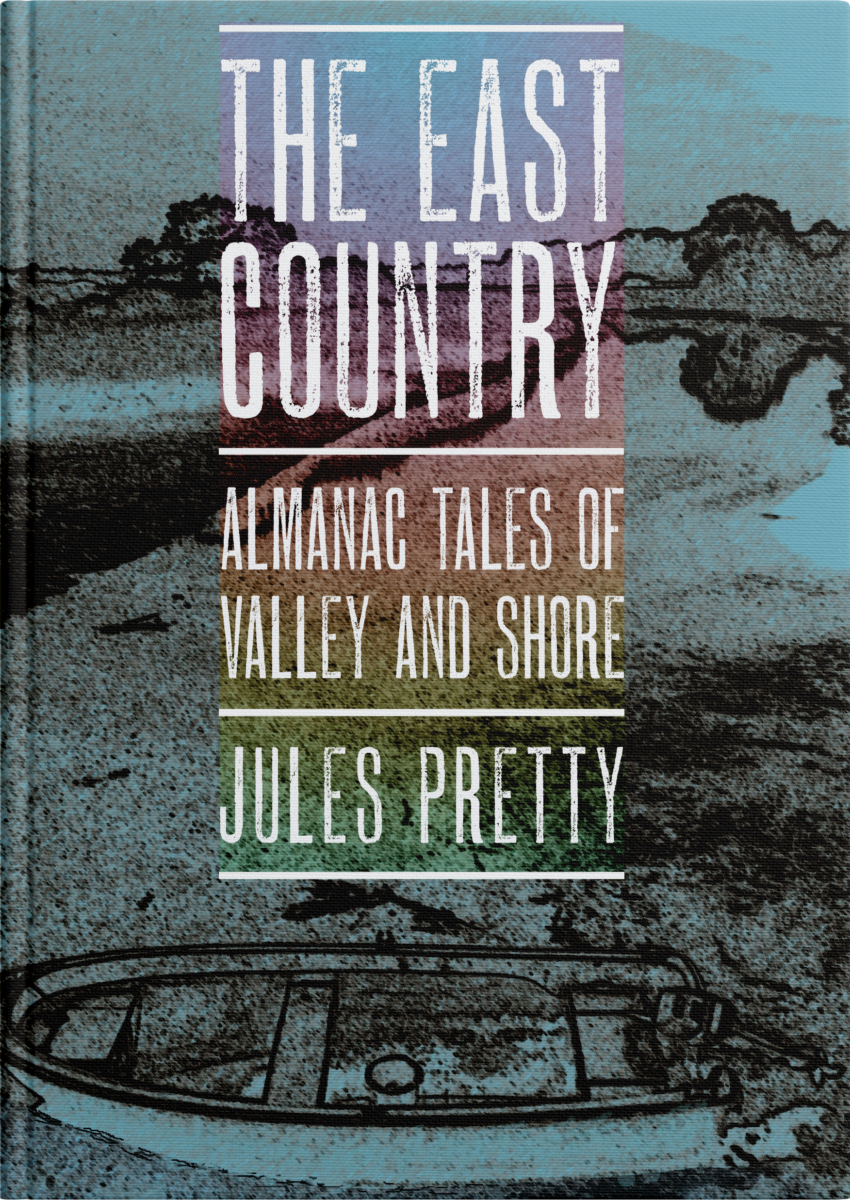
The East Country is a work of creative nonfiction integrating memoir, natural history, cultural critique, and spiritual reflection into a single compelling narrative.
The book is framed around Aldo Leopold’s classic Sand County Almanac: some could live without nature but most should not.
The East Country follows the seasons through 74 tales set in a variety of landscapes from valley to salty shore, and suggests we all should develop long attachments to the local. The land can change us for the better.
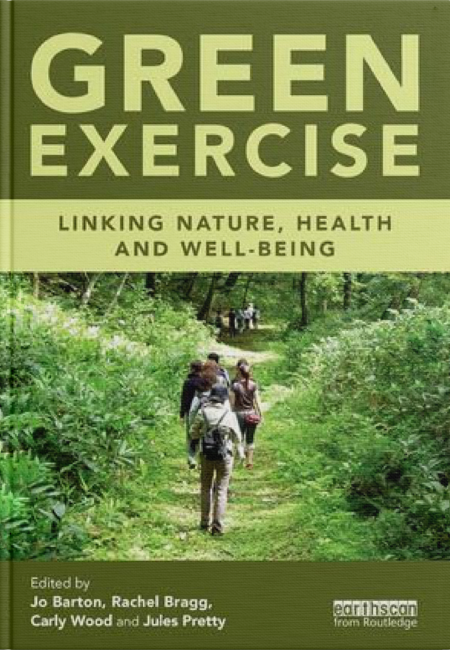
Green Exercise (2016)

The concept of Green Exercise has now been widely adopted: there are health benefits from being active in the presence of nature.
This book integrates evidence from many disciplines including physiology, ecology, psychology, sociology and the environmental sciences, and across a wide range of countries.
It describes the impact of Green Exercise on human health and well-being through all stages of the lifecourse and covers a wide spectrum from immune function through to facilitating human behavioural change. It demonstrates the value of Green Exercise in both schools and the workplace, as well as its therapeutic properties.
Green Exercise is an effective intervention for vulnerable groups and promote healthy ageing: activities including wilderness therapy, therapeutic horticulture and the use of forests and water.
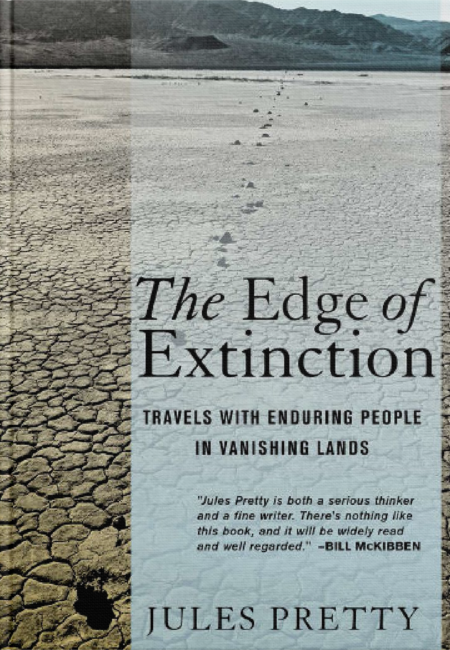
The Edge of Extinction (2014)
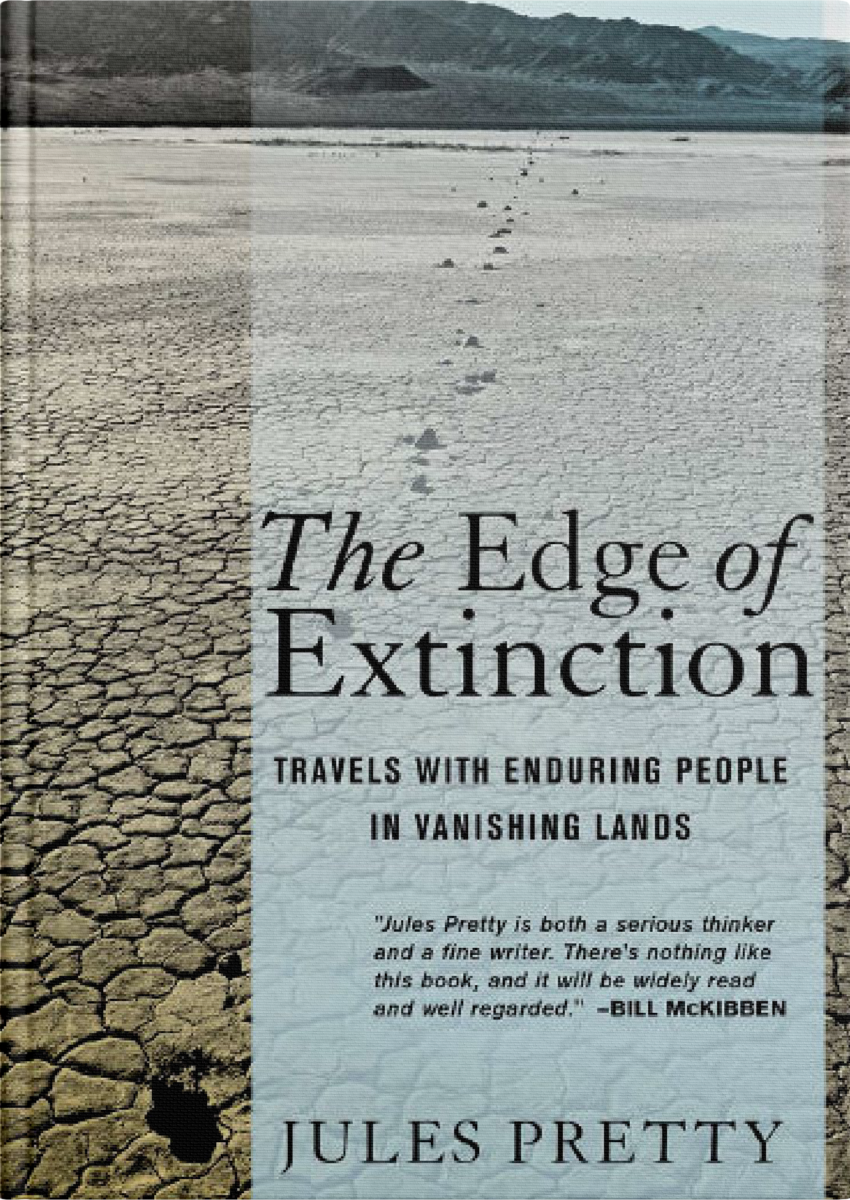
The Edge of Extinction explores life and change in a dozen environments and cultures across the world, tracking a series of journeys through desert, coast, mountain, steppe, snowscape, marsh, and farms.
These stories show there are many different ways to live in cooperation with nature.
From these accounts of people living close to the land and close to the edge brought by climate and nature loss there emerges a larger story about sustainability and the future of the planet.
What we manage to preserve in cultures across the world may well save us all.
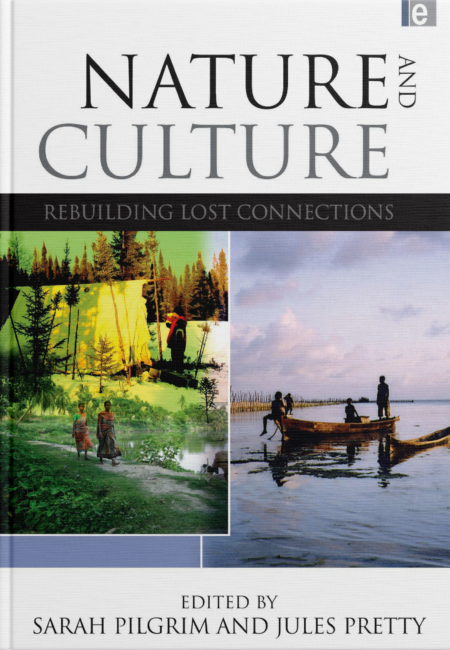
Nature and Culture (2011)
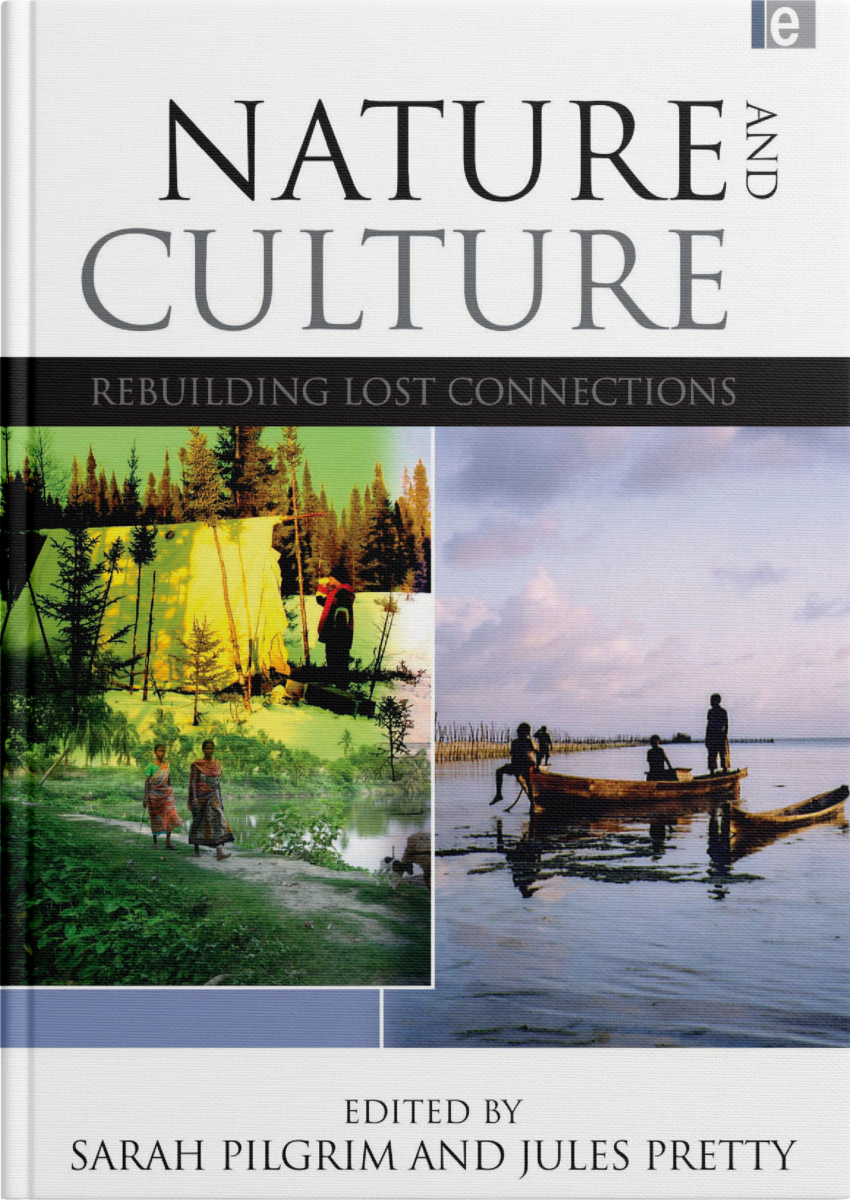
There is a growing recognition that the diversity of life comprises both biological and cultural diversity.
This book the bridges linking biological and cultural diversity. An international team of authors explore the common drivers of loss, and show that policy responses should target both forms of diversity in a novel integrative approach to conservation, thus reducing the gap between science, policy and practice.
While conserving nature alongside human cultures presents unique challenges, this book shows that any hope for saving biological diversity is predicated on a concomitant effort to appreciate and protect cultural diversity.
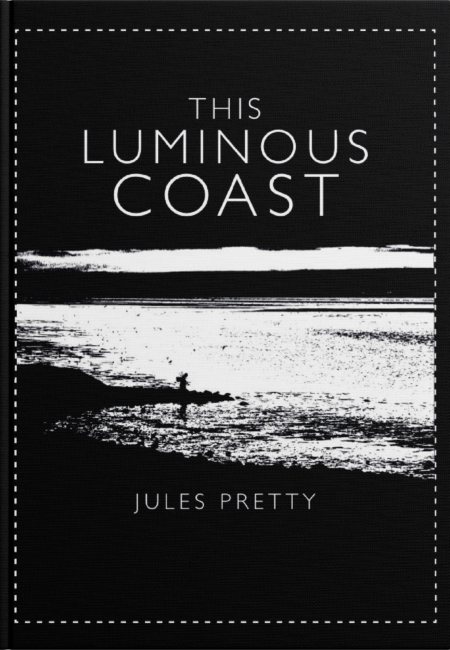
This Luminous Coast (2011)
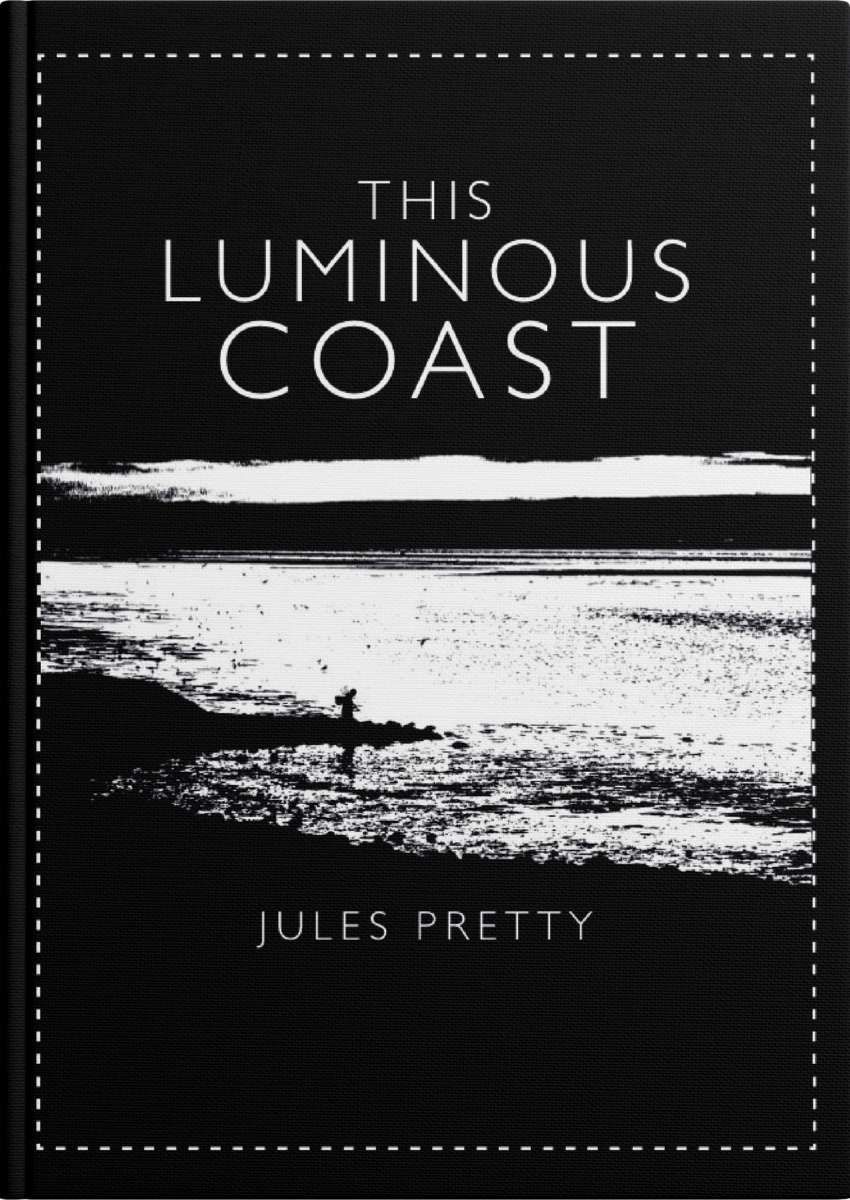
Over the course of a year, I walked along the shorelines of Essex, Suffolk and Norfolk in southeastern England, eventually exploring 400 miles on foot (and another 100 miles by boat). It is a coast and a culture that is about to be lost, not yet, perhaps, but soon, to rising tides and industrial ways of living.
This Luminous Coast takes the reader on these journeys over land and water; over sea walls of dried grass, beside stretched fields of golden crops, alongside white sails gliding across the intricate lacework of invisible creeks and estuaries, under vast skies that are home to curlews and redshanks and the outpourings of skylarks.
Through words and photographs, This Luminous Coast interweaves stories of the land and sea with people past and present.
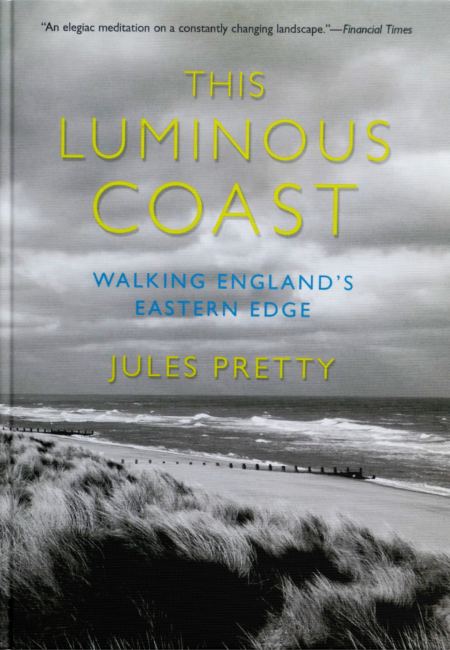
This Luminous Coast (2011)
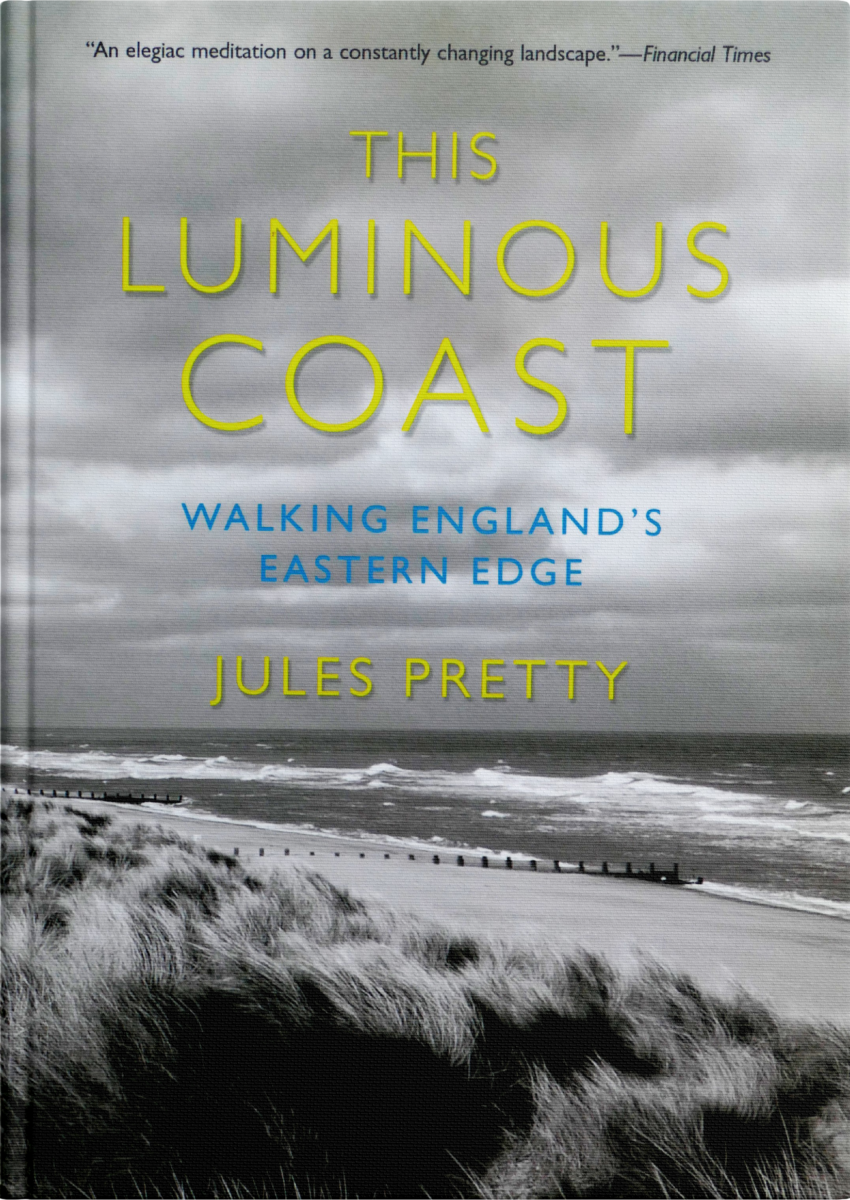
Over the course of a year, I walked along the shorelines of Essex, Suffolk and Norfolk in southeastern England, eventually exploring 400 miles on foot (and another 100 miles by boat). It is a coast and a culture that is about to be lost, not yet, perhaps, but soon, to rising tides and industrial ways of living.
This Luminous Coast takes the reader on these journeys over land and water; over sea walls of dried grass, beside stretched fields of golden crops, alongside white sails gliding across the intricate lacework of invisible creeks and estuaries, under vast skies that are home to curlews and redshanks and the outpourings of skylarks.
Through words and photographs, This Luminous Coast interweaves stories of the land and sea with people past and present.
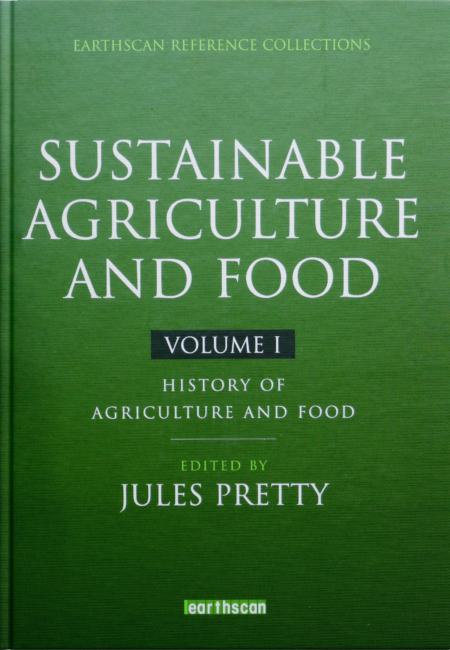
Sustainable Ag and Food (2008)
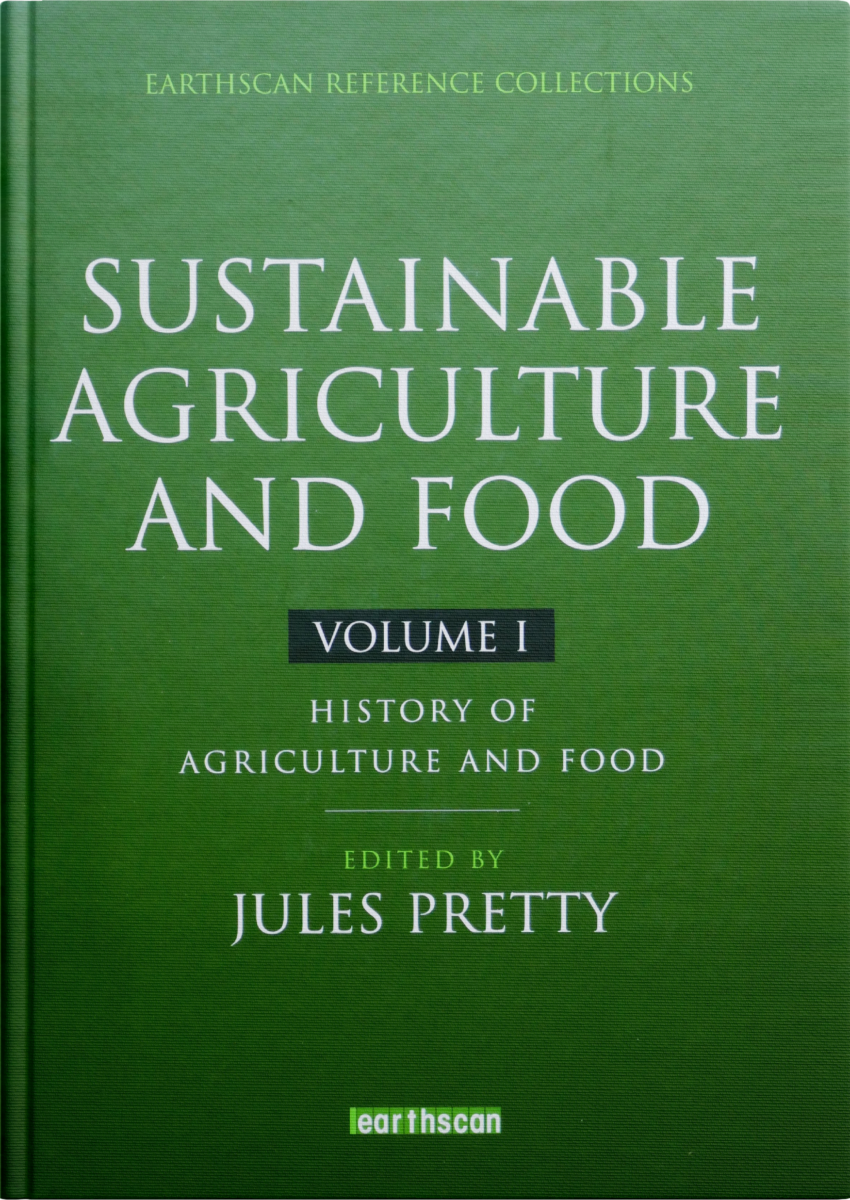
Four volumes of 80 key papers on sustainable agriculture, with editorial sections written by the editor, Jules Pretty. This is a book series for libraries.
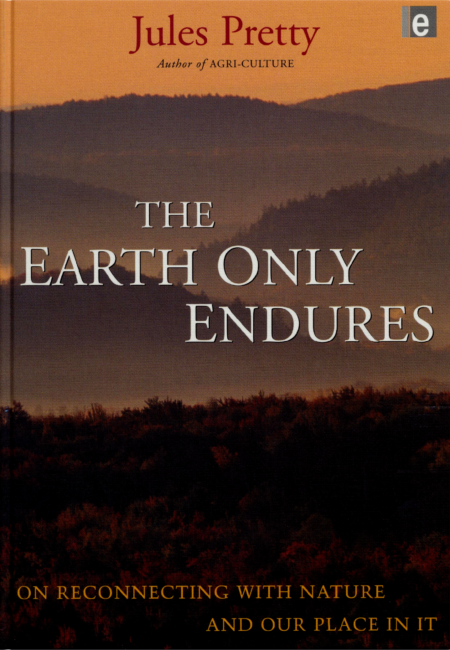
The Earth Only Endures
(2008)
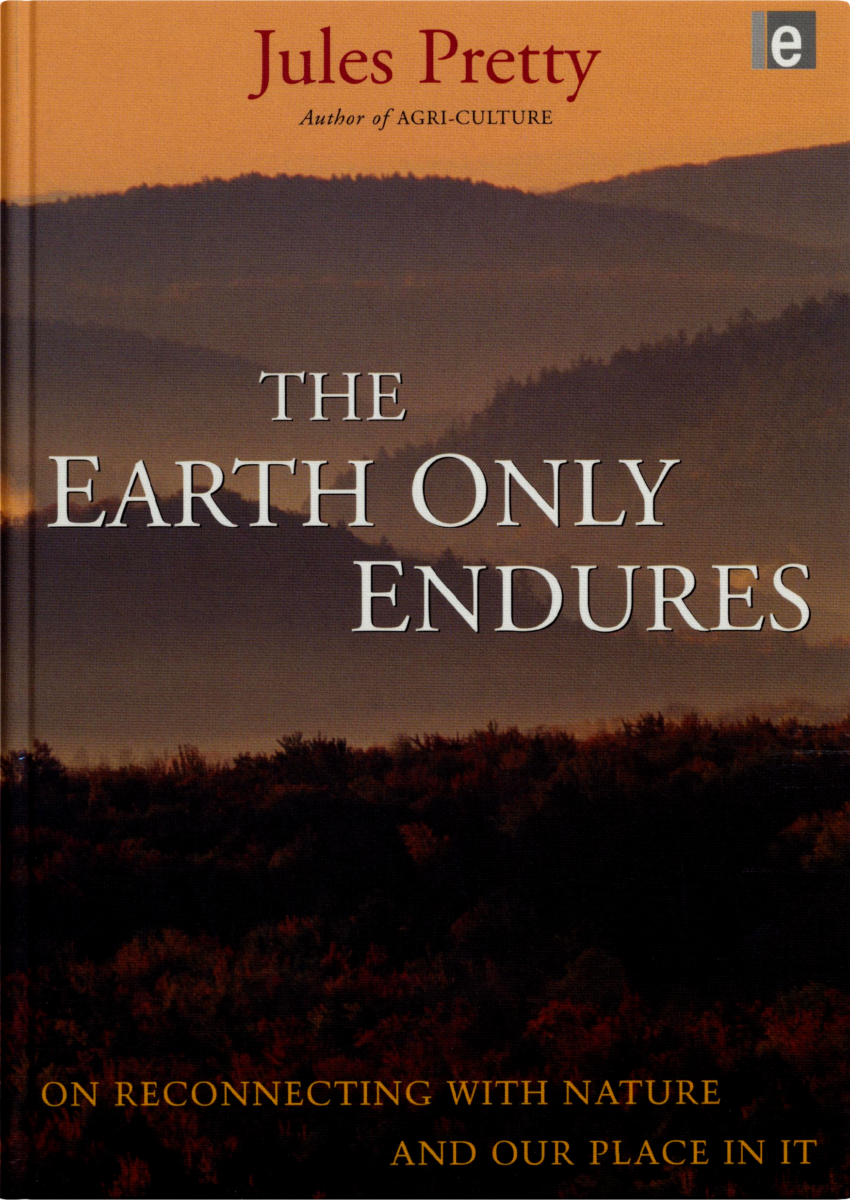
For most of human history, we have lived our daily lives in a close relationship with the land. Yet now, for the first time, more people are living in urban rather than rural areas, bringing about an estrangement. This book is about our relationship with nature, animals and places.
A series of interlinked essays leads readers on a voyage that weaves through the themes of connection and estrangement between humans and nature. The journey shows how our modern lifestyles and economies would need six or eight Earths if the entire world population adopted high consumption patterns.
Gaia threatens to become Grendel. This book offers glimpses of an optimistic future for humanity, in the very face of climate change and pending global environmental catastrophes.
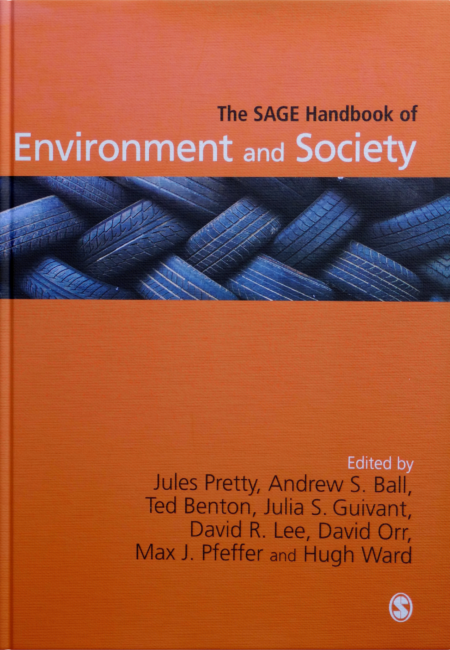
Sage Handbook Environment & Society (2007)
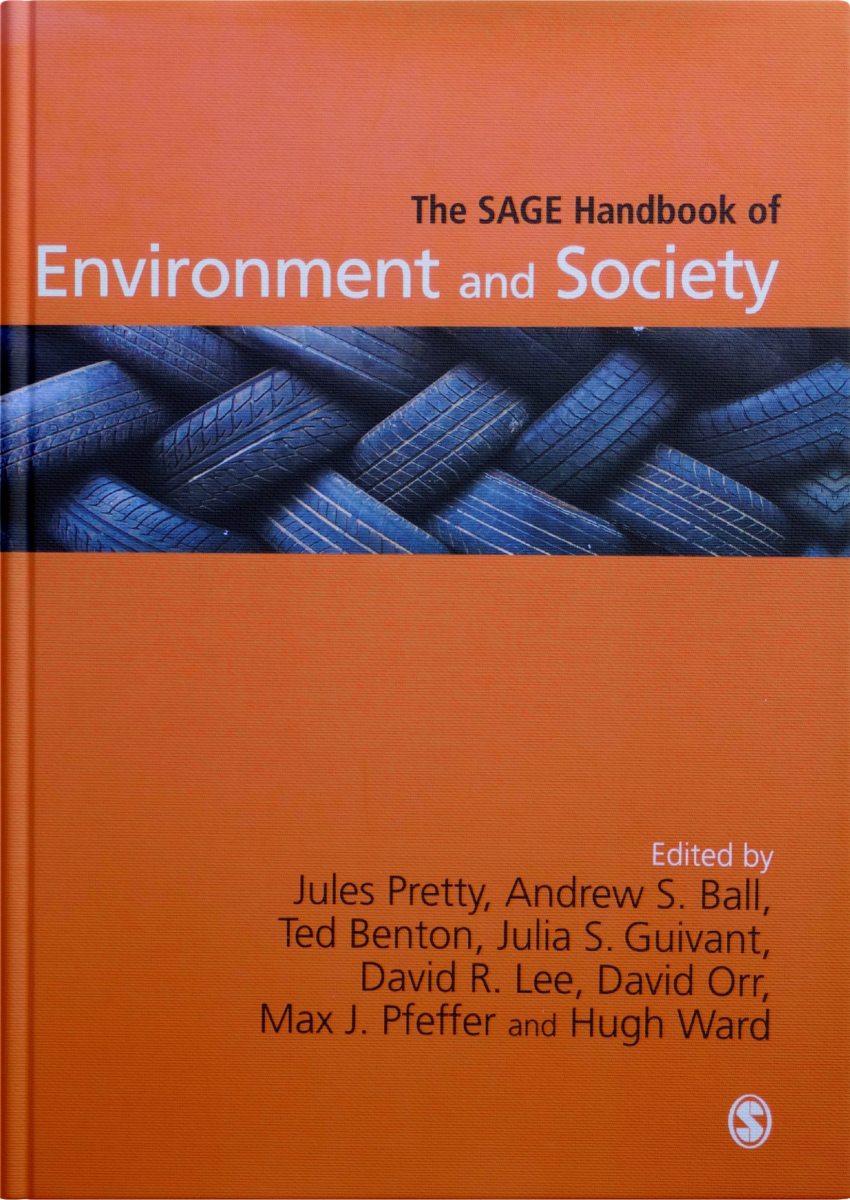
The SAGE Handbook of Environment and Society focuses on the interactions between people, societies and economies, and the state of nature and the environment.
It is organised in seven sections: Environmental thought: past and present; Valuing the environment; Knowledges and knowing; Political economy of environmental change; Environmental technologies; Redesigning natures; and Institutions and policies for influencing the environment.
“This is the desert island book for anyone interested in the relationship between society and the environment. A masterful collection of contributions on every conceivable dimension of environmental thinking in the social sciences and humanities. No library should be without it!′
Robyn Eckersley, University of Melbourne
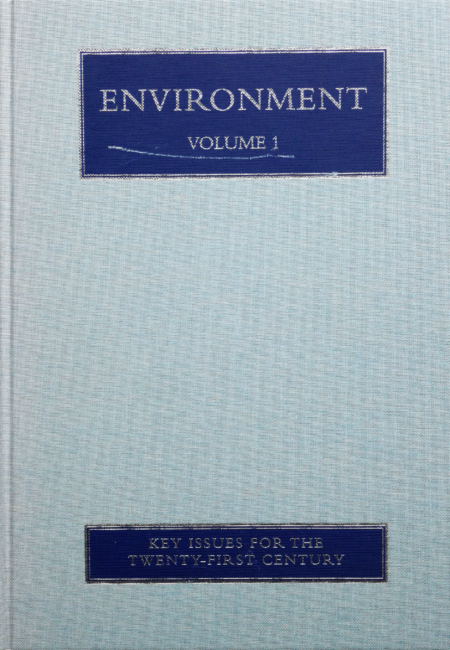
Sage Major Work Environment (2006)
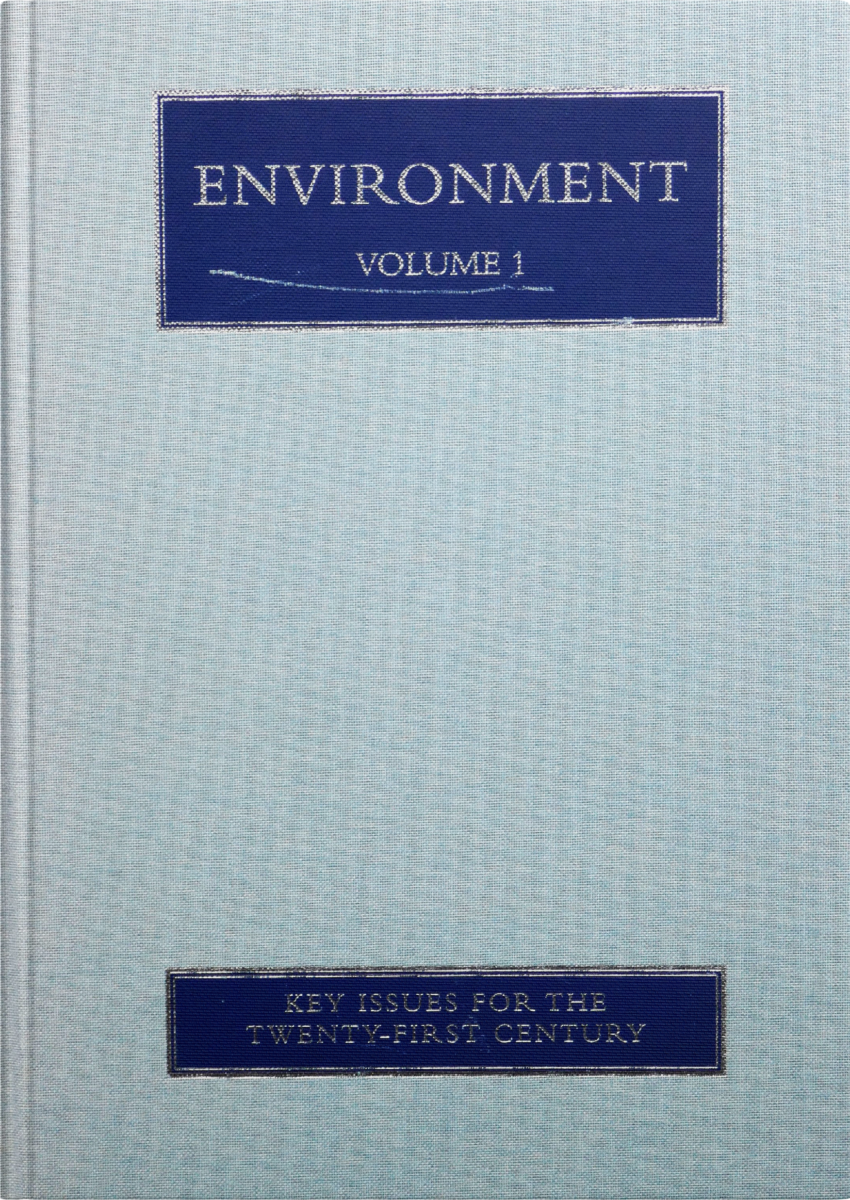
Four volumes of 80 key papers on the environment, with editorial sections written by the editor, Jules Pretty. This is a book series for libraries.
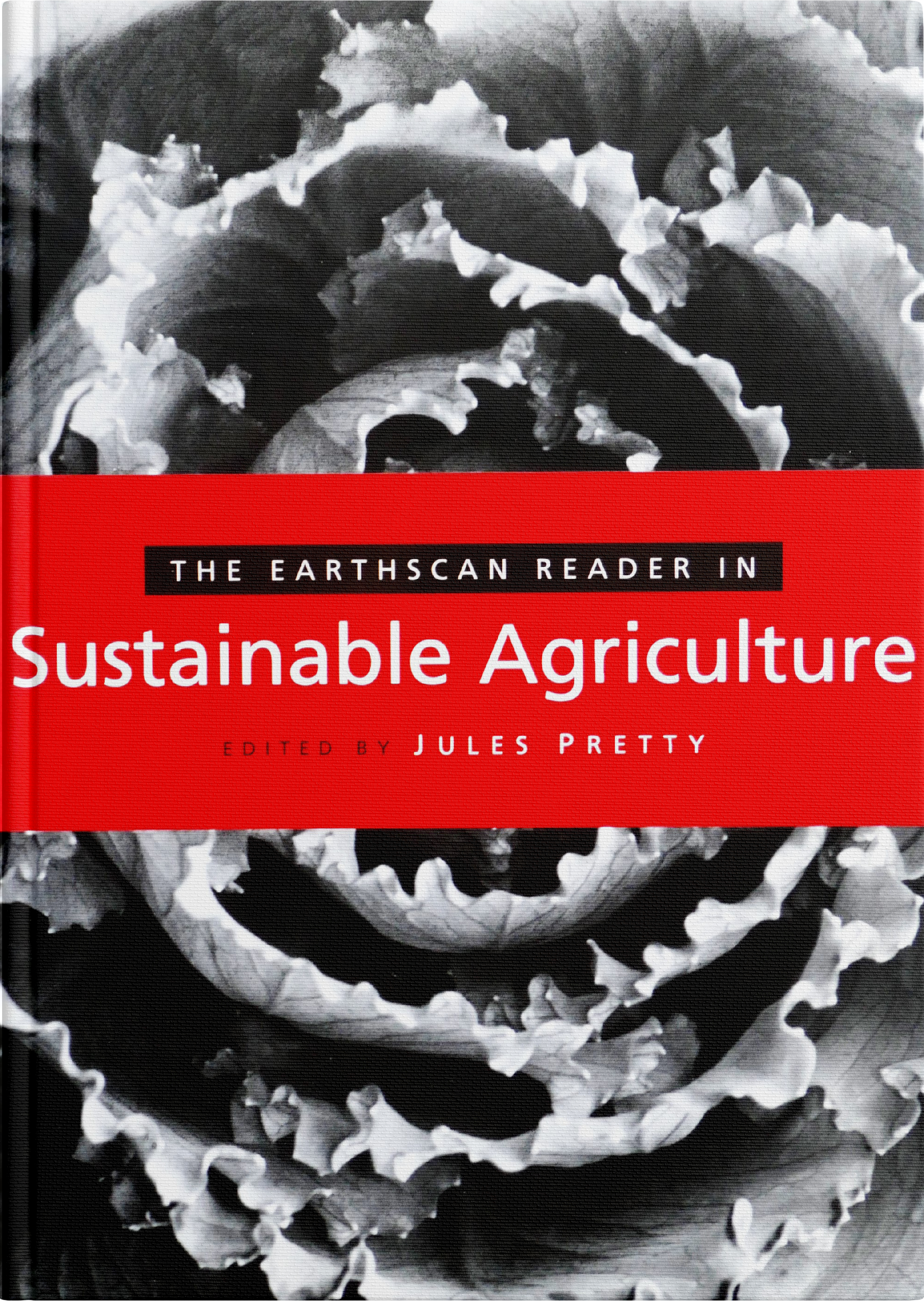
Sustainable Agriculture Reader (2005)

Our agricultural and food systems are not meeting everyone’s needs, and despite great progress in increasing productivity over the past century, hundreds of millions of people remain hungry and malnourished.
This book describes a different form of agriculture: one founded more on ecological principles and which is also more harmonious with people, their societies and cultures. Edited by the world’s leading expert on sustainable agriculture, this volume brings together the most influential scholarship in the field.
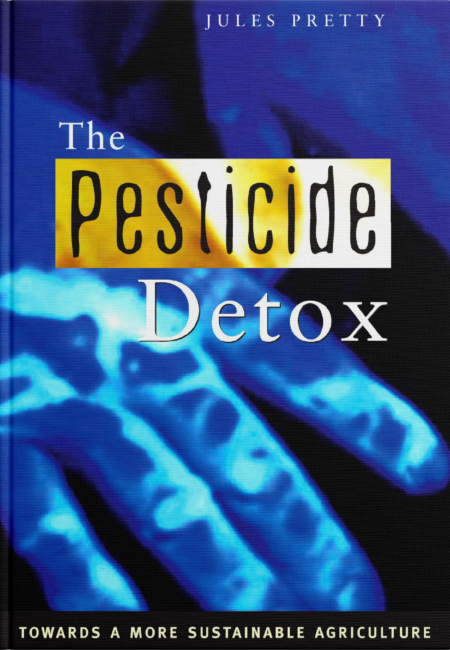
Pesticide Detox
(2005)
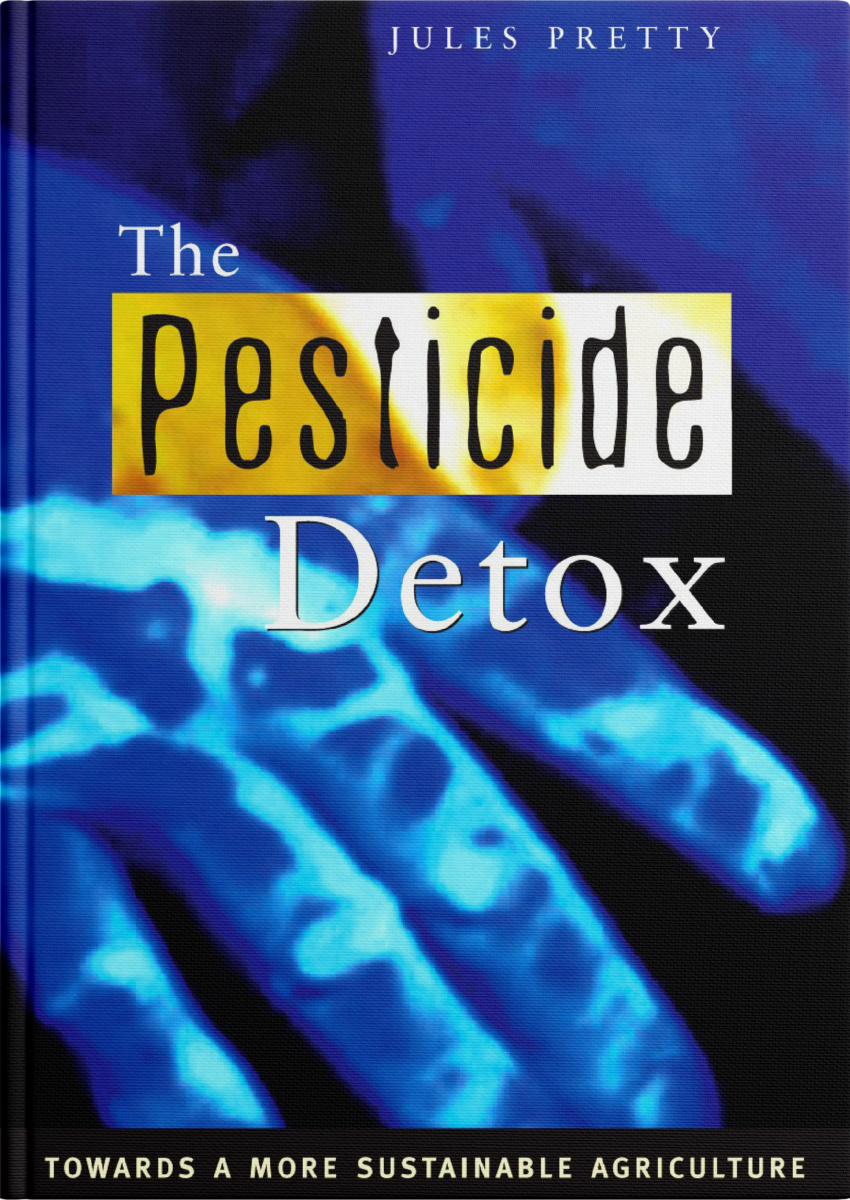
Since the 1960s, agricultural production per person has increased by a third. Yet this growth has masked enormous hidden costs arising from widespread pesticide use – massive ecological damage and high incidences of farmer poisoning and chronic health effects.
Whereas once the risks involved with pesticide use were judged to be outweighed by the potential benefits, increasingly the external costs of pesticides, to environments and human health, are being seen as unacceptable.
The Pesticide Detox explores the potential for the phasing-out of hazardous pesticides and the phasing-in of cost-effective alternatives already available on the market.
This book makes clear that it is time to start the pesticide detox and to move towards a more sustainable agriculture.
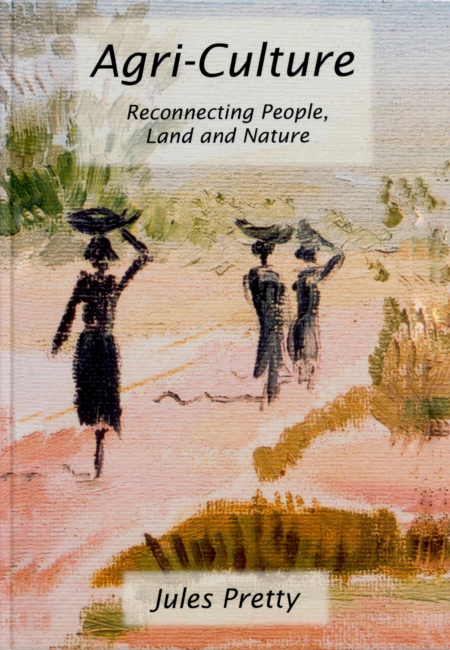
Agri-Culture
(2003)
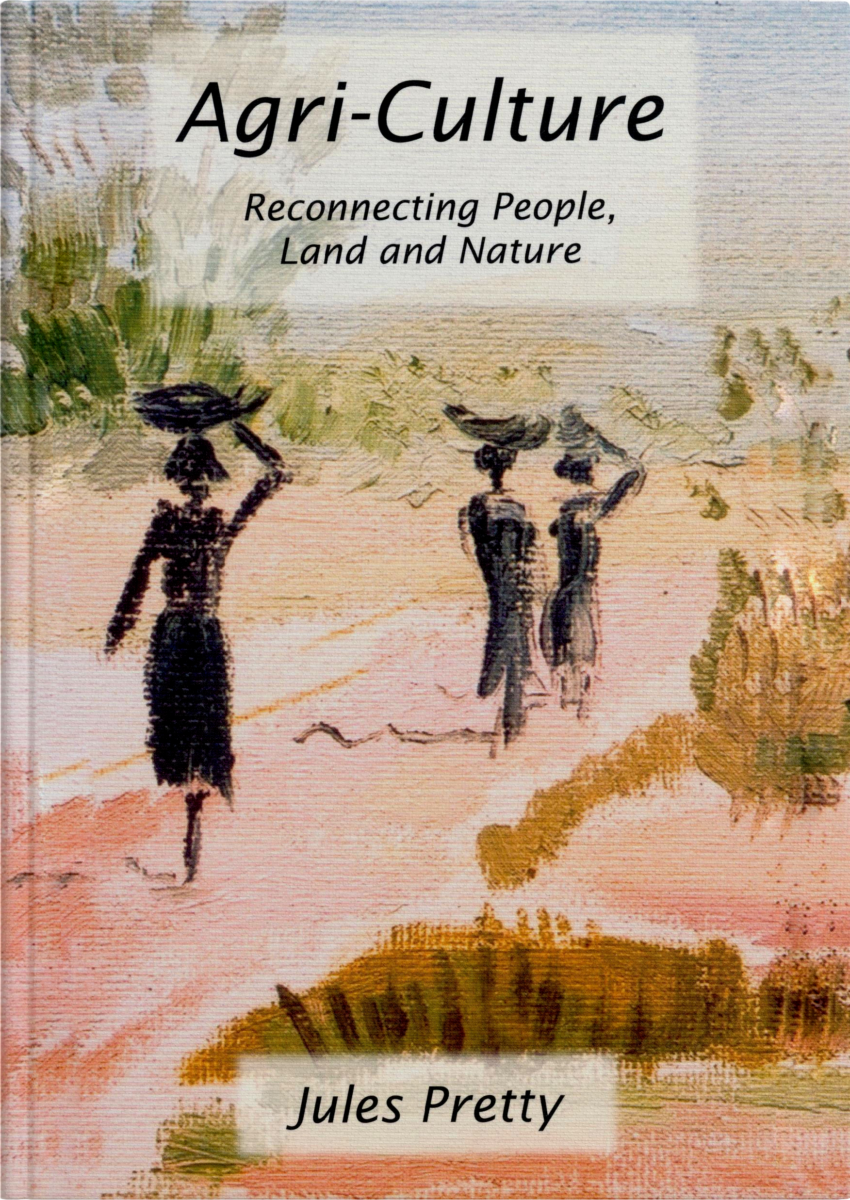
Something is wrong with our agricultural and food systems. Despite great progress in increasing productivity in recent decades, hundreds of millions of people remain hungry and malnourished, and further millions suffer for eating too much food or the wrong sort.
Agri-Culture envisages the expansion of a new form of food production and consumption founded on more ecological principles and in harmony with the cultures, knowledges and collective capacities of the producers themselves.
It draws on many stories of successful agricultural transformation worldwide , but warns true prosperity will depend on the radical reform of the institutions and policies that control global food futures.
The time has come for the next agricultural revolution.
This book was translated into Japanese.

Agri-Culture (Japanese) (2003)
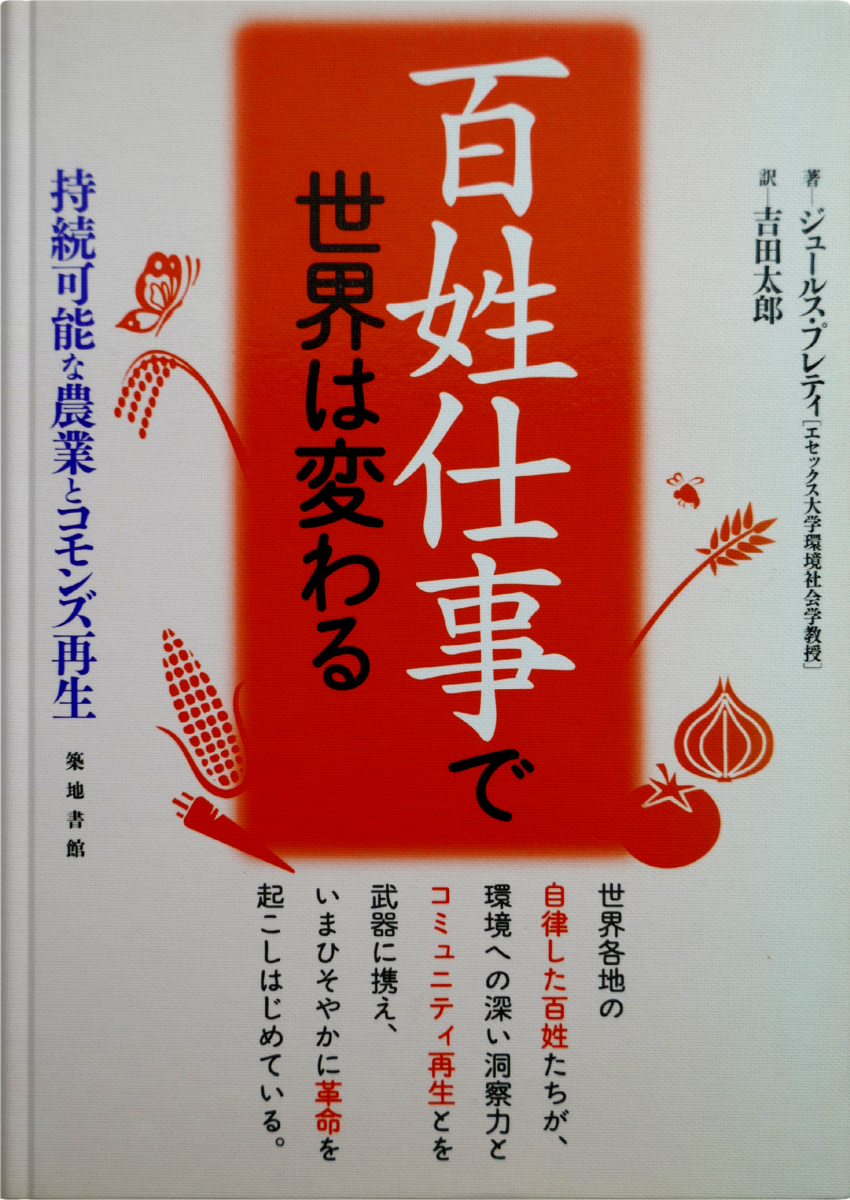
Something is wrong with our agricultural and food systems. Despite great progress in increasing productivity in recent decades, hundreds of millions of people remain hungry and malnourished, and further millions suffer for eating too much food or the wrong sort.
Agri-Culture envisages the expansion of a new form of food production and consumption founded on more ecological principles and in harmony with the cultures, knowledges and collective capacities of the producers themselves.
It draws on many stories of successful agricultural transformation worldwide , but warns true prosperity will depend on the radical reform of the institutions and policies that control global food futures.
The time has come for the next agricultural revolution.
This book was translated into Japanese.
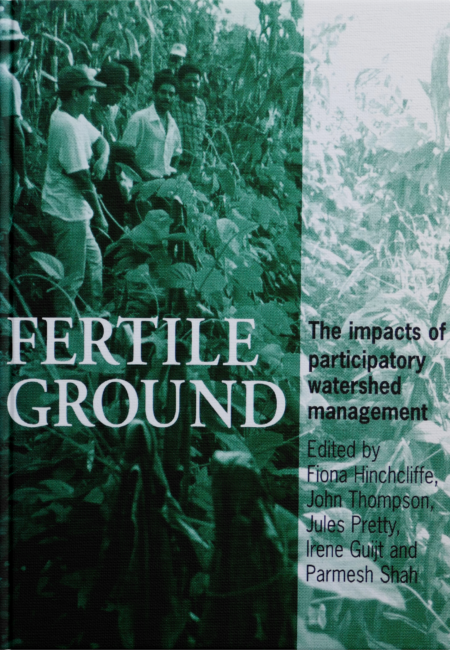
Fertile Ground
(1999)
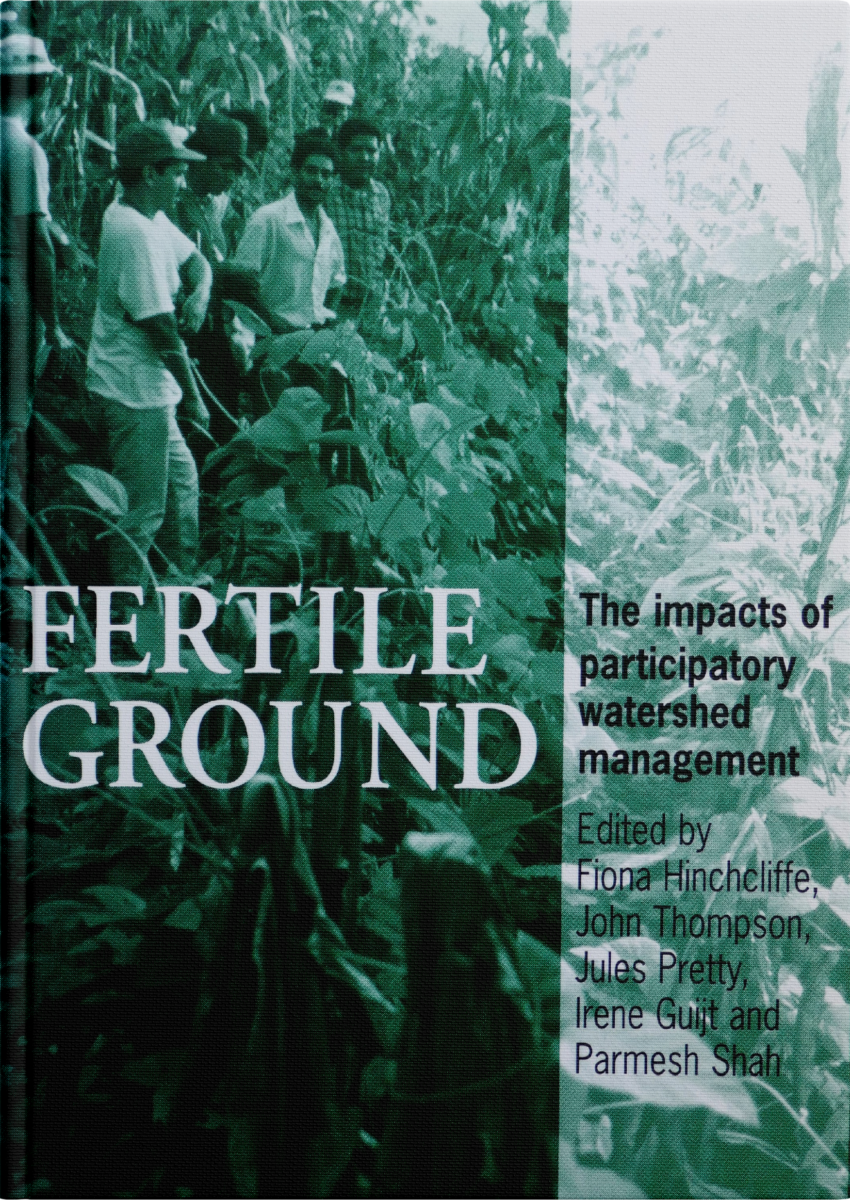
Fertile Ground presents the findings of in-depth research into the impacts of participatory watershed management in a wider range of agroecological and socioeconomic settings in Africa, Asia, Australia and Latin America.
The Sustainable Agricultural and Rural Livelihoods Programme IIED had, worked with many organizations engaged in the development, implementation, monitoring and evaluation of participatory watershed management and soil and water conservation projects and programmes.
The 23 case studies provide compelling evidence of the importance of local people’s involvement in natural resource planning and management and reveal how difficult it is to scale-up and institutionalize participatory approaches in large, sector-based programmes, particularly in government bureaucracies
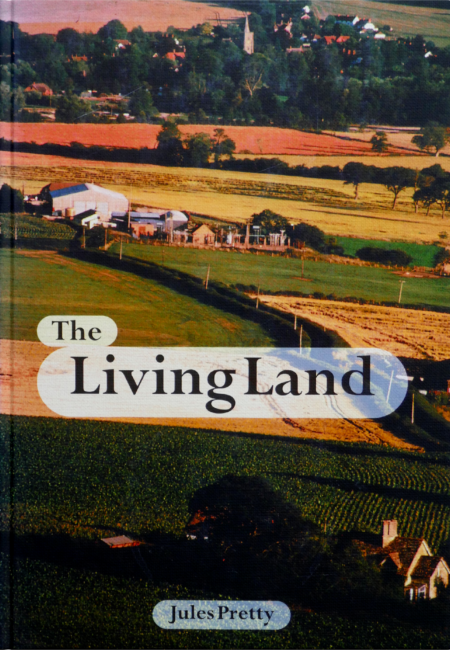
The Living Land
(1998)
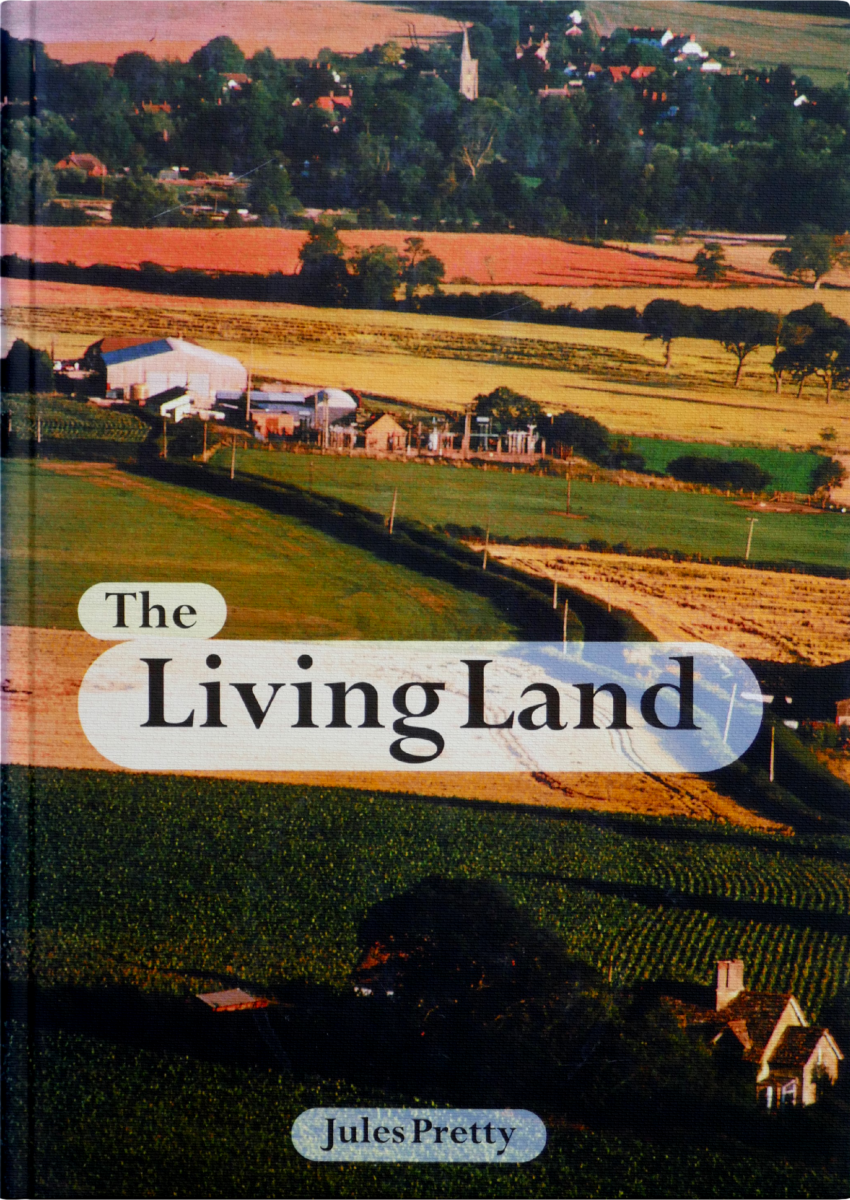
The Living Land sets out a new ‘stakeholder’ vision for rural regeneration in Europe.
It integrates three themes: sustainable agriculture, localised food systems and rural community development.
All three offer ways of rebuilding natural and social capital, and a large ‘sustainability dividend’ is waiting to be released from current practices – creating more jobs, more wealth and better lives from less consumption.
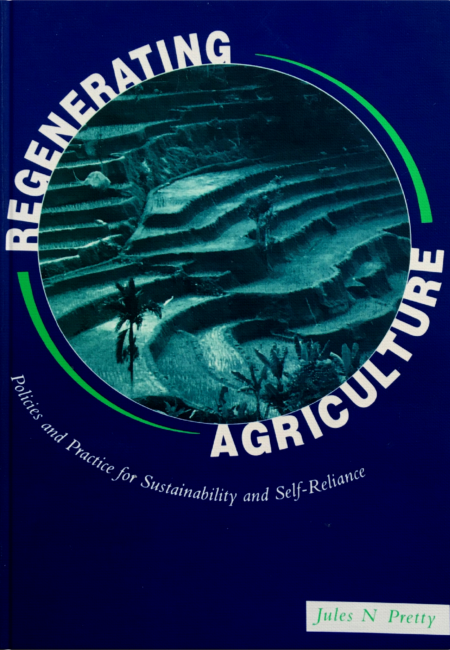
Regenerating Agriculture
(1995)

One of the first books on regenerative agriculture.
This book shows that there is a viable alternative to industrial agriculture – a form which conserves natural resources, maintains rural employment and minimizes the external costs, without loss of productivity.
Using case studies from industrialized and developing countries, Jules Pretty describes the new regenerative technical, institutional and policy options available.
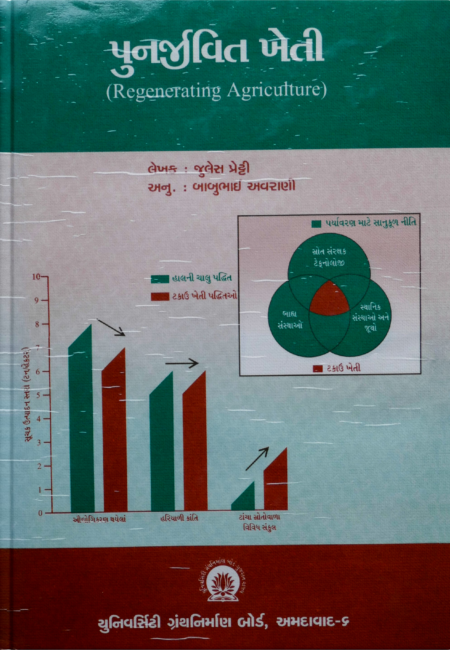
Regenerating Agriculture Hindi (1995)
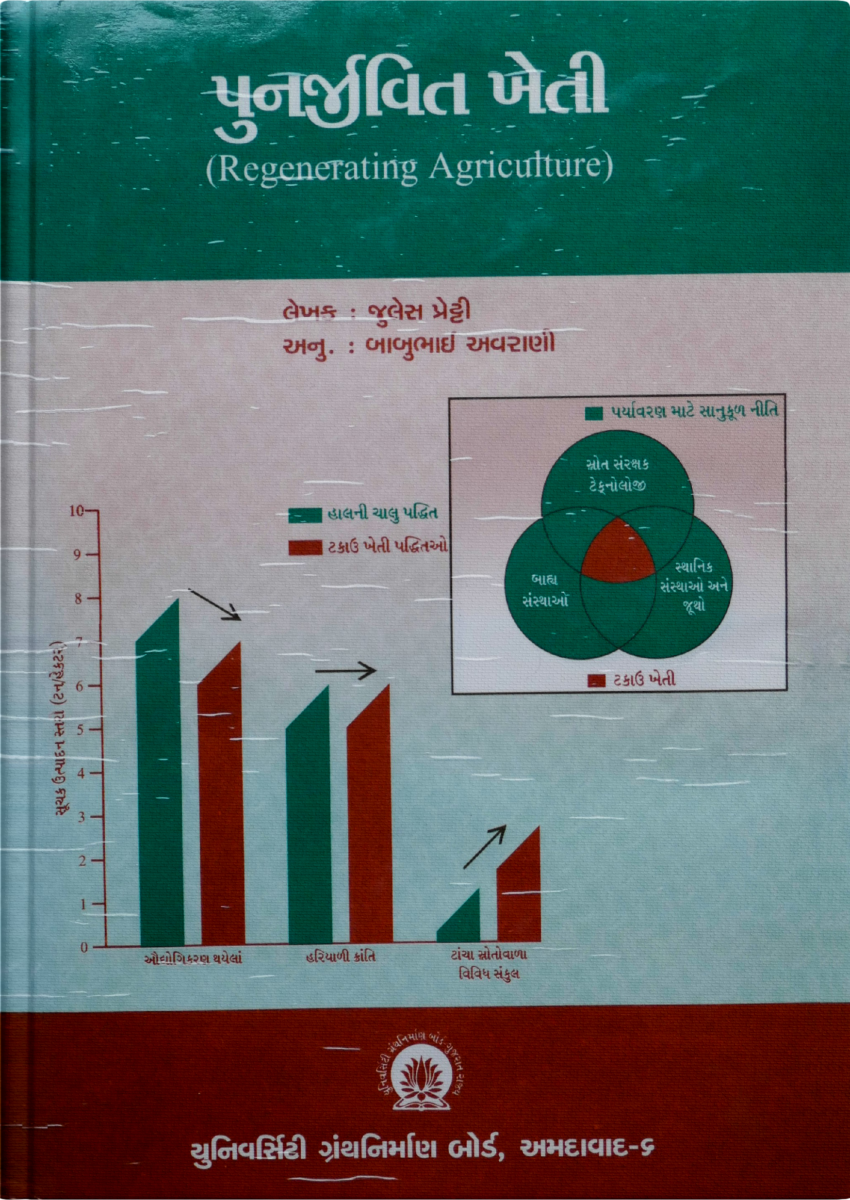
One of the first books on regenerative agriculture.
This book shows that there is a viable alternative to industrial agriculture – a form which conserves natural resources, maintains rural employment and minimizes the external costs, without loss of productivity.
Using case studies from industrialized and developing countries, Jules Pretty describes the new regenerative technical, institutional and policy options available.
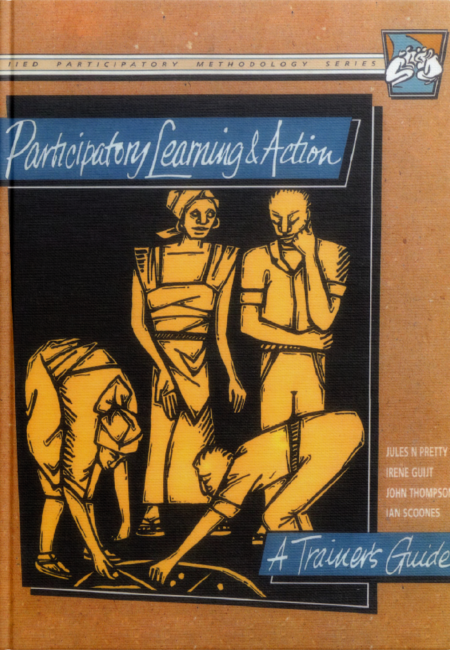
Participatory Learning and Action Trainers’ Guide (1994)
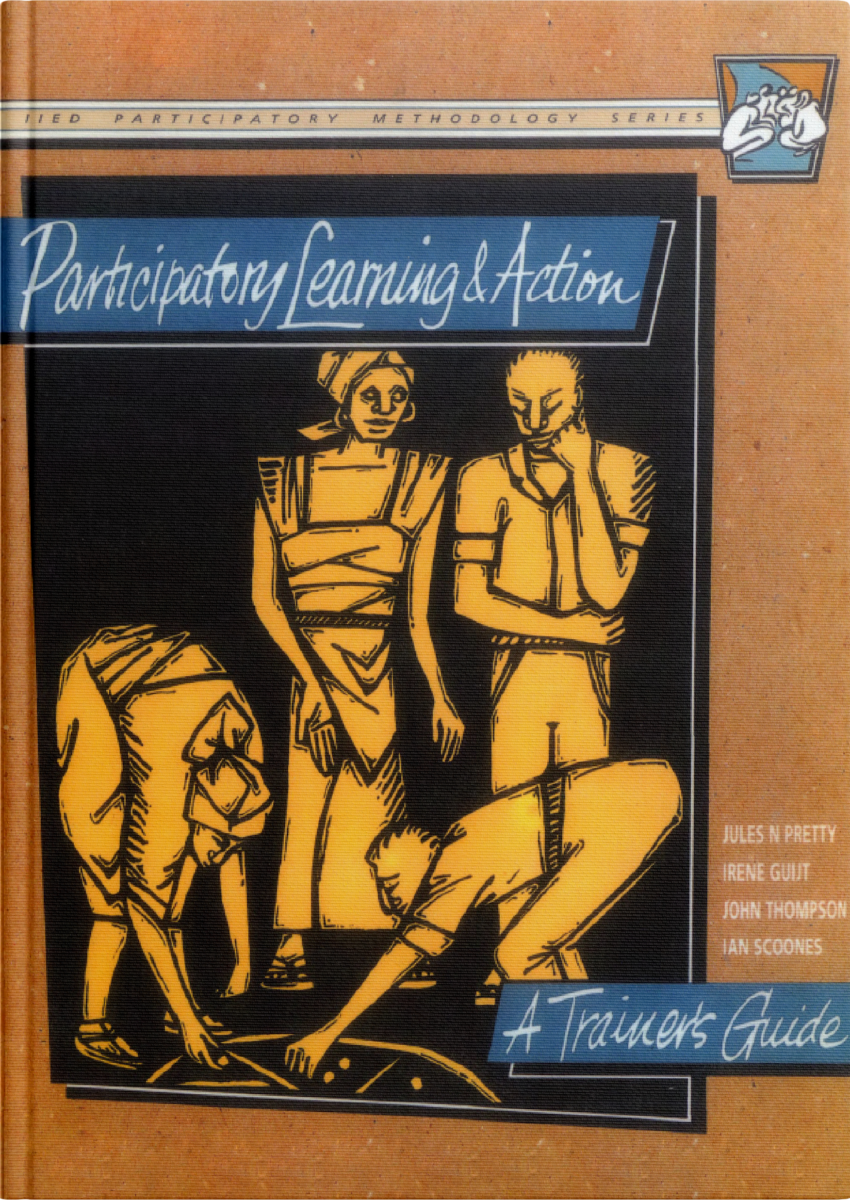
A now classic text, and available for free download at https://www.iied.org/6021iied
Designed for both experienced and new trainers who have an interest in training others in the use of participatory and public engagement methods, whether they are researchers, practitioners, policy-makers, villagers or trainers.
The guide provides a comprehensive background to the principles of adult learning; focuses on the facilitation skills necessary for effective training; describes group dynamics and how to build interdisciplinary teams; summarises the principles of participatory learning and action; describes in detail the process of training, both in the workshop and in the field; and suggests how to organise workshops, from laying the groundwork to post-training evaluation.
It details 101 interactive training games and exercises.
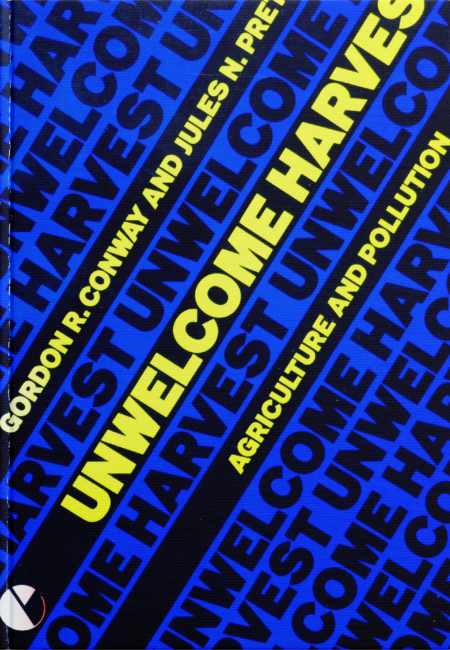
Unwelcome Harvest (1991)
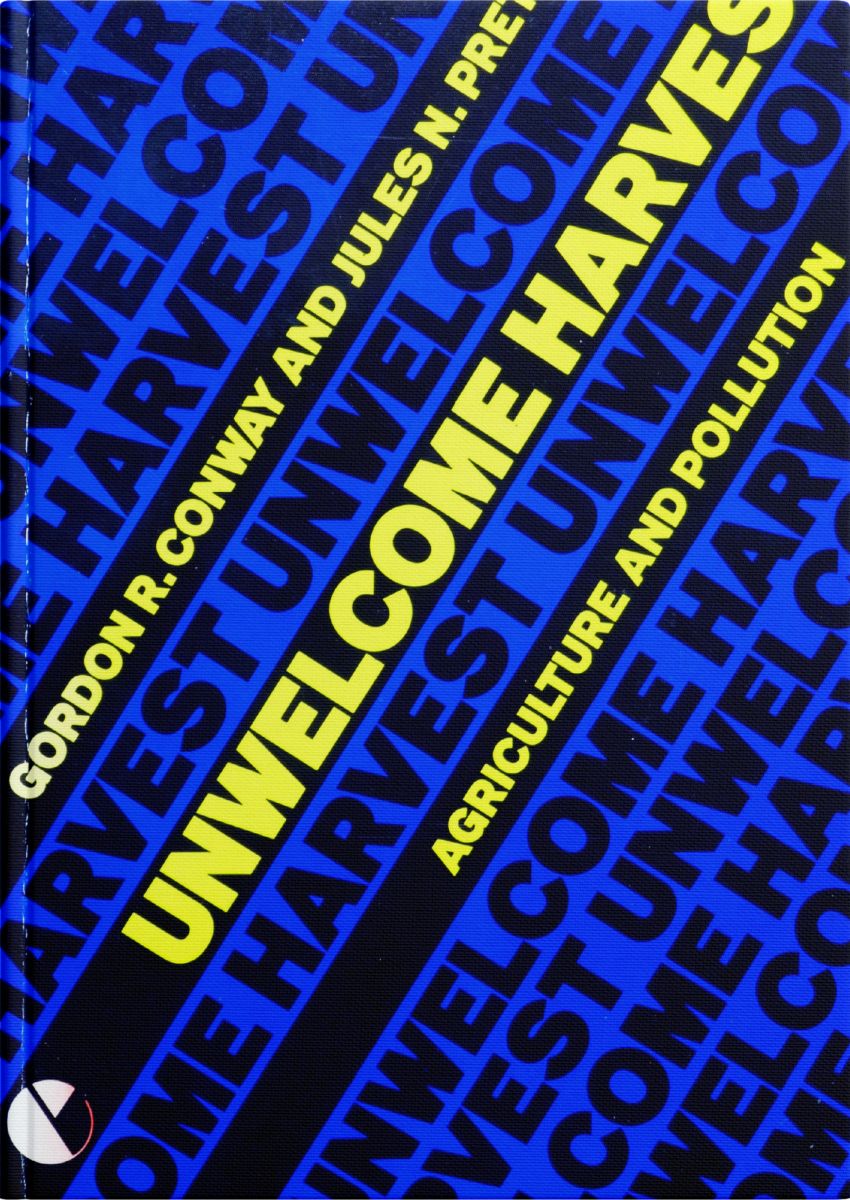
Agriculture pollutes: pesticides can destroy wildlife and many are toxic to humans; some fungicides and herbicides cause cancer. Nitrates result in the contamination of drinking water and raise the risk of the blue-baby syndrome in infants and of stomach cancer in adults. Agriculture produces methane, ammonia, nitrous oxide and the products of burning of straw, all of which add to the world’s problems of acid rain, depletion of the ozone layer and climate change.
This book was the first comprehensive review of agriculture and pollution: it examines the facts and assesses the relative dangers of each pollution problem.
It also considers the effects of pollution on agriculture itself, and how crop yields are depressed and livestock damaged by various forms of pollution from all sources.
 Jules Pretty
Jules Pretty